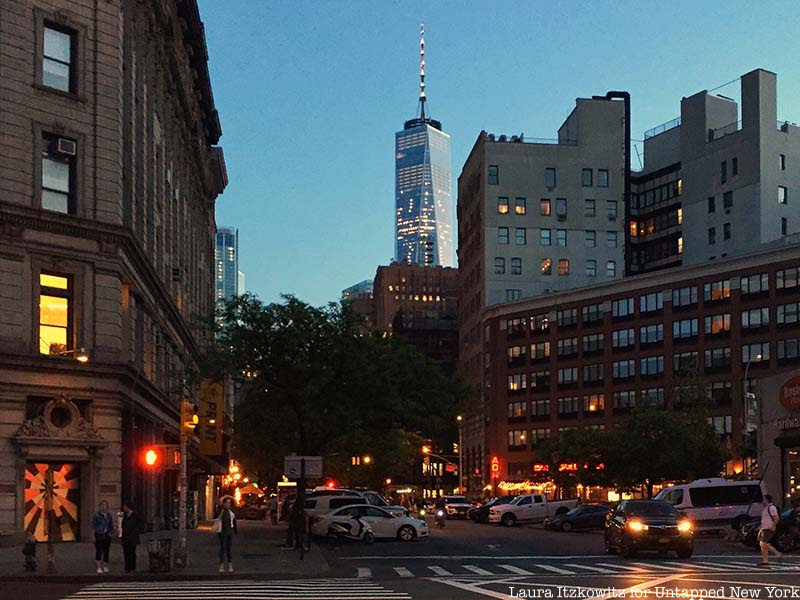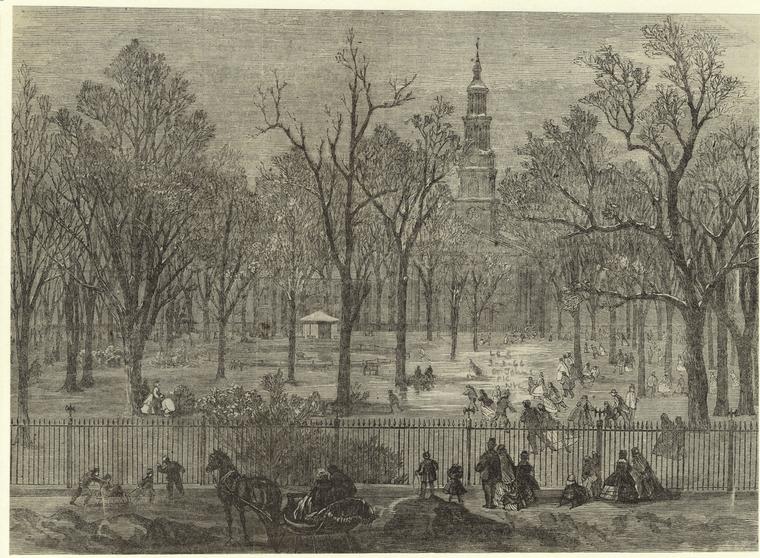
Tribeca — or TriBeCa as it’s sometimes spelled — may be known for having some of Manhattan’s most expensive real estate, but it wasn’t actually a single cohesive neighborhood until the late 1960s. The moniker stands for Triangle Below Canal — though it’s not actually a triangle — and the modern-day neighborhood stretches from Canal Street down to Vesey Street and from Broadway all the way to the Hudson River.
During the early days of Dutch New Amsterdam, the area was mostly farmland. As Manhattan expanded north, much of the area came to be owned by Trinity Church, which created the beautiful St. John’s Park anchored by St. John’s Chapel and rented out plots of land on 99-year leases. Just south of Tribeca, where the World Trade Center is now, used to be Washington Market, a massive wholesale market that turned the area into a center for food production and sales. The area around Broadway was a posh shopping district for clothes and textiles until the Great Fire of 1835.
When Commodore Cornelius Vanderbilt created the Hudson River Railroad, which ran through the Meatpacking District, he destroyed St. John’s Park, replacing it with St. John’s Terminal, which he topped with a massive statue of himself. Read on to discover where to see an homage to St. John’s Chapel and nine other secrets of Tribeca.
1. The city’s poshest residential square was just blocks from a brothel district

In the late 1700s and early 1800s, Hudson Square — informally known as St. John’s Park — near Canal and Varick Streets was considered the city’s poshest residential square. Trinity Church hired John McComb, who also designed City Hall, to build the beautiful Georgian-style St. John’s Chapel inspired by St. Martin’s in the Field in London, to anchor the square, hoping to attract well-to-do residents. Predating Gramercy Park, it was New York City’s first private park, and by 1830 was considered the city’s most prestigious address.
Yet just three blocks south was a brothel district on and around Thomas Street. Much attention was drawn to the area in 1836, when the 23-year-old prostitute Helen Jewett was murdered in her bed. The subsequent investigation and trial of her client Richard Robinson caused a media sensation unlike anything seen before it. The area remained a hotbed for prostitution until the mid-1800s, with Chapel Street (later renamed West Broadway) as the most notorious street.





